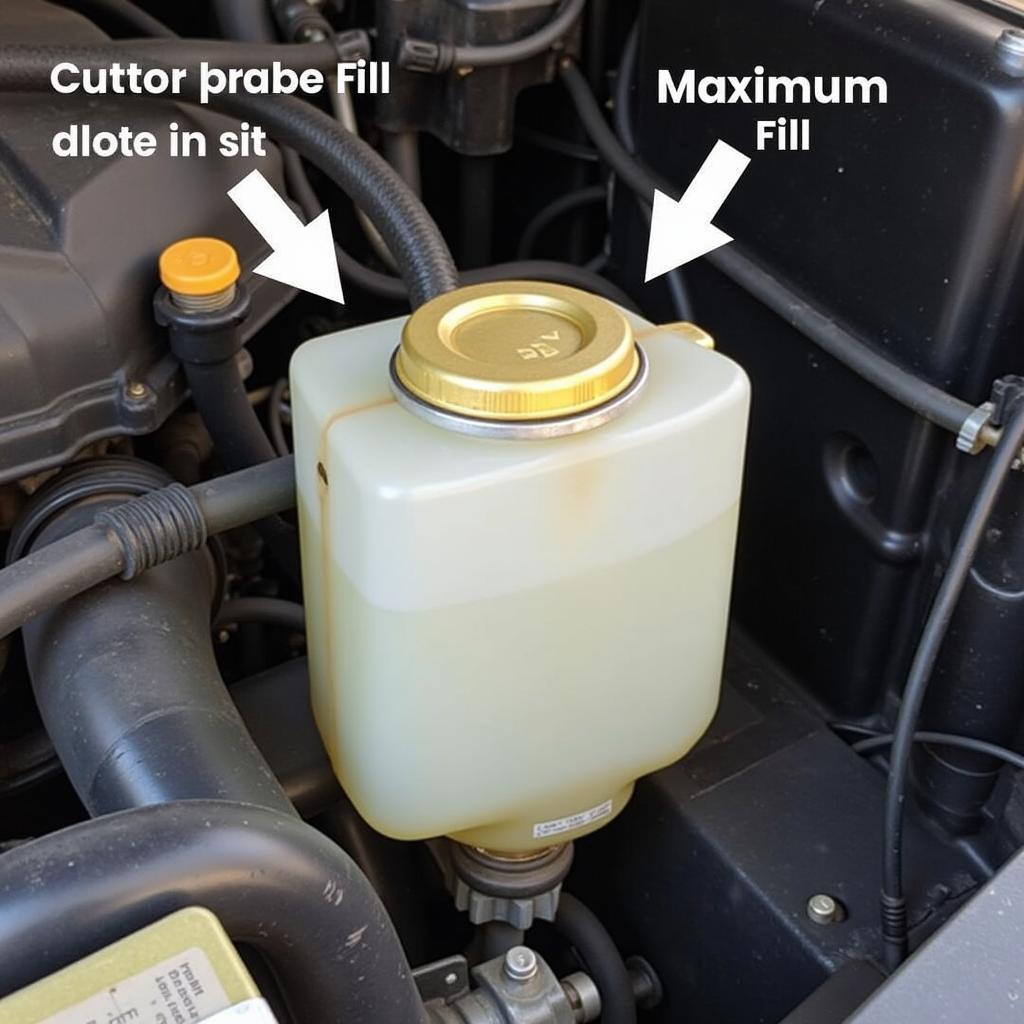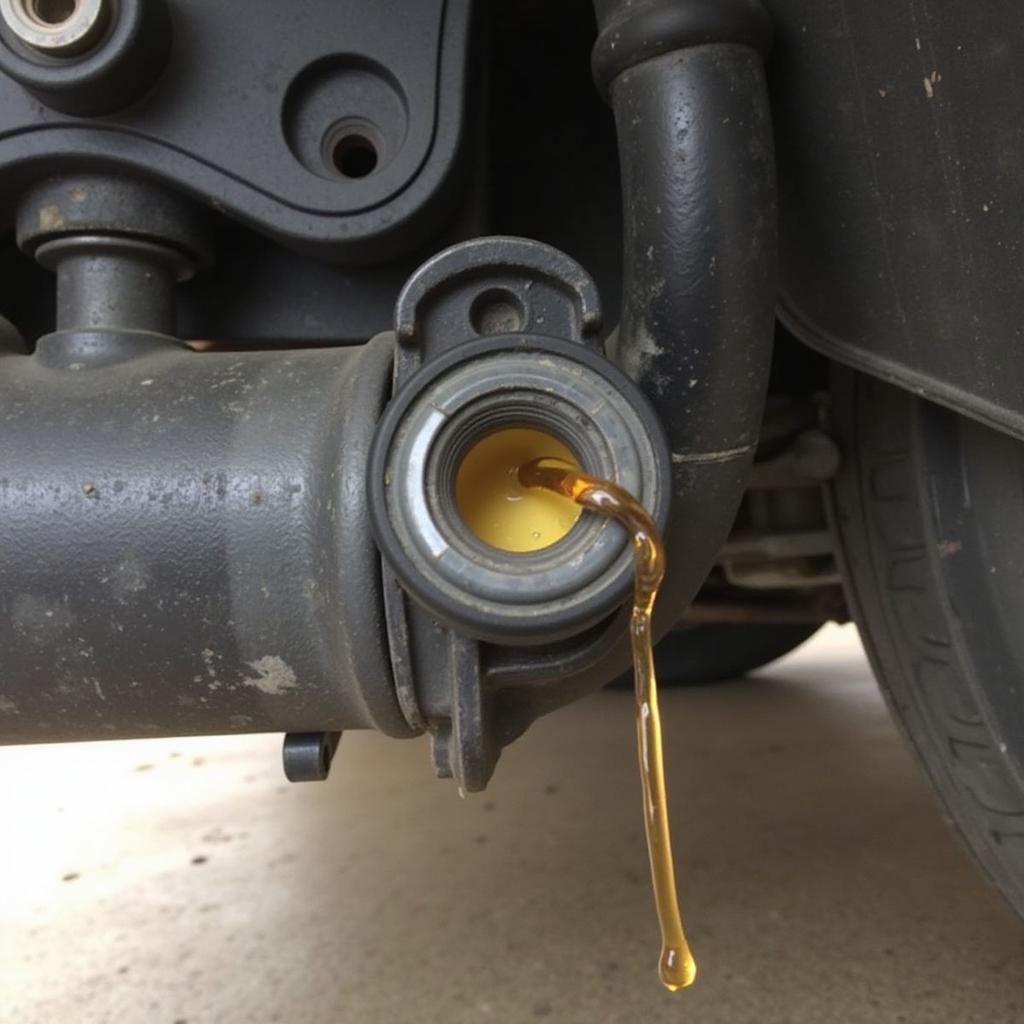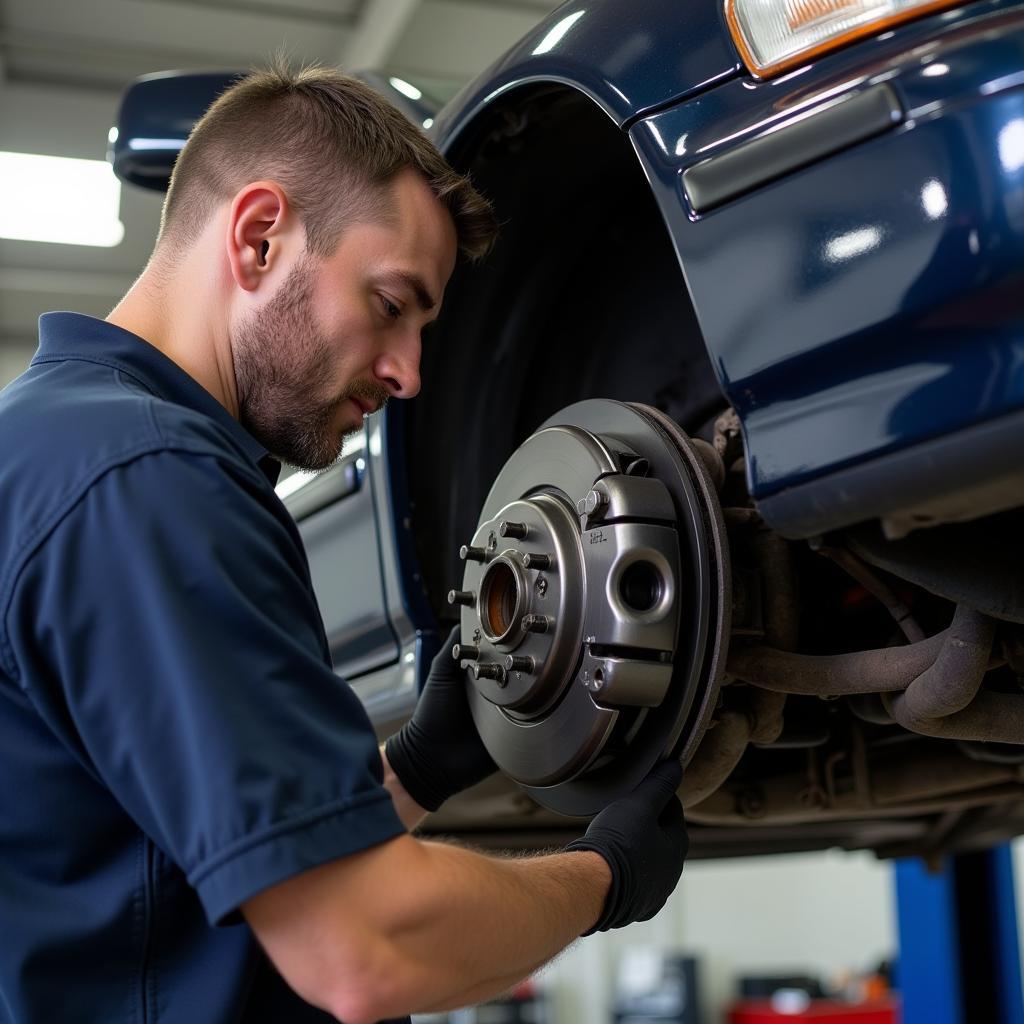The brake warning light on your dashboard is a crucial safety feature, and when it illuminates on your 1994 Honda Accord LX, it’s a signal that shouldn’t be ignored. While this light could indicate a serious brake system issue, it’s often related to a malfunctioning brake warning light sensor. This comprehensive guide will walk you through the steps to diagnose and potentially fix the problem yourself.
Let’s dive in and get your Honda Accord LX braking safely and confidently again!
Understanding Your Honda Accord LX’s Brake Warning Light System
Before you start troubleshooting, it’s helpful to grasp how the brake warning light system operates:
- Hydraulic System: Your Accord LX uses hydraulic pressure to engage the brakes. When you press the pedal, brake fluid amplifies that force, pushing the brake pads against the rotors to slow or stop the car.
- Brake Warning Light Sensor: This sensor plays a critical role in monitoring your brake fluid level and signaling potential problems. It’s usually located within the master cylinder, a reservoir on the driver’s side of the engine bay that houses the brake fluid.
- How It Works: The sensor acts like a switch. When the brake fluid level drops below a safe level, the sensor triggers the warning light on your dashboard.
Common Causes of a Lit Brake Warning Light
A glowing brake warning light can be caused by several factors:
- Low Brake Fluid: The most common culprit is low brake fluid. This could be due to a leak in the system or simply from brake pad wear over time.
- Faulty Brake Warning Light Sensor: The sensor itself can wear out or malfunction, sending a false signal even if the fluid level is adequate.
- Worn Brake Pads: As your brake pads wear down, the brake calipers need to extend further to maintain braking force. This requires more brake fluid, potentially lowering the level in the reservoir.
- Brake Fluid Leak: A leak anywhere in the brake system, from the master cylinder to the brake lines or calipers, can lead to a drop in brake fluid and trigger the warning light.
 Honda Accord Brake Fluid Reservoir
Honda Accord Brake Fluid Reservoir
Diagnosing the Problem: A Step-by-Step Guide
Here’s how to pinpoint the cause of your 1994 Honda Accord LX’s brake warning light:
1. Check the Brake Fluid Level:
- Safety First: Park your car on a level surface, engage the parking brake, and let the engine cool down. Brake fluid is corrosive, so wear gloves and eye protection.
- Locate the Master Cylinder: Open the hood and find the master cylinder. It’s a small, clear plastic reservoir on the driver’s side, typically labeled “Brake Fluid.”
- Inspect the Fluid Level: The reservoir should have minimum and maximum lines marked on the side. If the fluid level is below the minimum line, you’ll need to add more brake fluid.
2. Inspect for Brake Fluid Leaks:
- Visual Inspection: Carefully examine the area around the master cylinder, brake lines (metal tubes running from the master cylinder), and brake calipers (located behind the wheels) for any signs of leaks. Look for wet spots, drips, or a damp, oily residue.
- Color of the Fluid: Brake fluid is typically clear or slightly yellowish. If you notice a dark or sludgy appearance, it could indicate contamination or the need for a brake fluid flush.
 Brake Fluid Leak on Honda Accord
Brake Fluid Leak on Honda Accord
3. Check the Brake Warning Light Sensor:
- Locate the Sensor: The brake warning light sensor is usually located on the side or bottom of the master cylinder. It will have a wiring harness connected to it.
- Inspect the Sensor: Check the sensor for any visible damage, corrosion, or loose connections. If you notice any issues, the sensor might need to be replaced.
4. Consider Brake Pad Wear:
- Visual Inspection (if possible): If you’re comfortable working with your brakes, you can try to visually inspect your brake pads. You’ll need to remove a wheel to do this. Look for a significant difference in thickness between the brake pad and the metal backing plate. Thin brake pads could be contributing to low brake fluid.
- Professional Inspection: If you’re unsure about checking your brake pads yourself, it’s always best to have them inspected by a qualified mechanic.
Important Note: If you discover a brake fluid leak or suspect a problem with your brake warning light sensor, it’s crucial to have your vehicle towed to a qualified mechanic for repairs. Driving with a brake system issue is extremely dangerous.
What if the Warning Light Stays On After Adding Fluid?
If you’ve topped off your brake fluid, but the warning light remains on, it usually points to one of these possibilities:
- Air in the Brake Lines: When you add brake fluid, it’s possible to introduce air into the system. This air can compress, leading to a spongy brake pedal feel and a falsely illuminated warning light. Bleeding the brakes is necessary to remove any trapped air.
- Faulty Brake Warning Light Sensor: Even if the sensor appears visually okay, it might have an internal malfunction preventing it from accurately detecting the fluid level.
- Electrical Issue: There could be a problem with the wiring harness connected to the sensor or a fault in the dashboard warning light circuit.
When to Seek Professional Help
While this guide provides you with the knowledge to troubleshoot basic issues, remember that your brake system is critical for your safety. Here’s when to call in the experts:
- You’re Uncomfortable: If you’re not comfortable working on your car’s braking system, don’t hesitate to take it to a professional.
- You Suspect a Leak: Brake fluid leaks are serious and require immediate attention from a qualified mechanic.
- The Problem Persists: If you’ve followed the troubleshooting steps and the warning light remains on or the problem recurs, it’s time for a professional diagnosis.
 Mechanic Inspecting Brakes on Honda Accord
Mechanic Inspecting Brakes on Honda Accord
Keeping Your 1994 Honda Accord LX’s Brakes in Top Shape
Regular maintenance is key to preventing brake problems:
- Regular Brake Fluid Checks: Get into the habit of checking your brake fluid level at least once a month.
- Brake Fluid Flushes: Honda recommends flushing your brake fluid every 2 years or 30,000 miles to prevent corrosion and maintain optimal performance.
- Brake Inspections: Have your brakes inspected by a qualified mechanic at least once a year or every 15,000 miles, or more frequently if you notice any changes in braking performance.
Conclusion
Addressing a brake warning light on your 1994 Honda Accord LX is essential for your safety and the longevity of your vehicle. By following the steps outlined in this guide, you can often diagnose the cause of the issue. However, remember that your brakes are critical safety components. If you’re unsure about any aspect of brake repair, always err on the side of caution and consult a qualified mechanic.
